Hey there, Rival! Ready to dive deep into the battlegrounds of Marvel Rivals? Whether you're a fresh recruit or a seasoned veteran looking to master the latest meta, this guide is your one-stop shop for understanding every game mode Season 2.5 has to offer. We'll break down the rules, maps, and winning strategies for everything from escorting precious cargo to duking it out in chaotic arenas. So, assemble your dream team, and let's get started!
Core Game Modes
These are the modes where legends are forged and ranks are climbed! Each offers a unique strategic challenge.
Convoy Escort: Push That Payload!
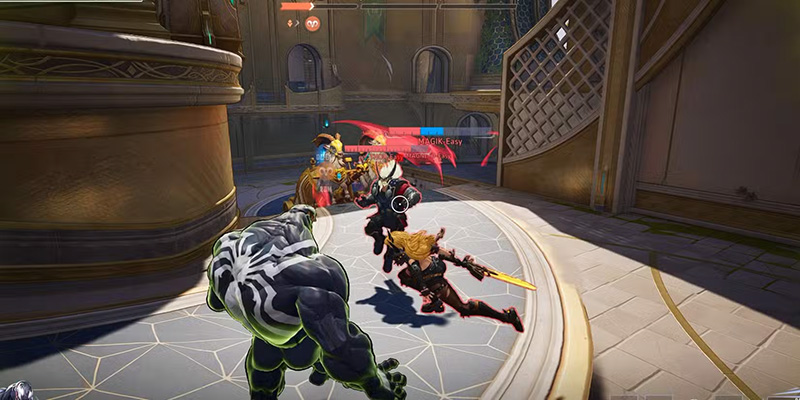
Think of Convoy as a high-stakes escort mission. One team attacks, trying to move a vehicle (the "payload") through a series of checkpoints to the finish line, while the other team defends, doing everything in their power to stop them.
Basic Rules, Pal!
The attacking team needs to capture and stay near the payload for it to move forward. The more attackers nearby, the faster it scoots. If defenders clear out the attackers and take control of the area around the payload, they can halt its progress or even push it backward (though not past any secured checkpoints). The defending team gets a bit of a head start (around 30-40 seconds) to set up their defenses before the attackers are released from their spawn.
Where You'll Be Battling: Map Pool
Convoy missions will take you across diverse battlefields:
- Midtown
- Spider-Islands
- Yggdrasill Path
- New in Season 2.5: Hellfire Gala: Arakko. This Martian landscape, once Krakoa's sister island, has been mechanically corrupted by Ultron and serves as a new Convoy map where attackers escort the Avatar of Krakoa.
Victory Lap: Timers & Win Conditions
Success in Convoy is all about managing the clock and pushing further than your opponents.
| Aspect | Details |
|---|---|
| Starting Timer | Typically 5 minutes |
| Checkpoints | Two main checkpoints (e.g., at ~33.3% and ~66.6% progress). Reaching them adds significant time (e.g., +3 mins for 1st, +2 mins for 2nd) |
| Winning (Attack) | Escort the payload to the final destination (100%) before time runs out |
| Winning (Defense) | Prevent the attackers from reaching the final destination before time expires |
| Competitive Play | Played in two rounds, with teams switching sides. The team that pushes the payload further (or fastest if both complete) wins. Ties can go to overtime. Ultimate charge does not carry over between rounds |
| Quick Play | Usually a single round. Attackers win by reaching 100% |
Dream Teams: Meta-Defining Comps
Pushing Through: Attacking Archetypes
When attacking in Convoy, sustain, coordinated pushes, and the ability to break through defensive chokepoints are paramount.
- Rush Comps: Teams built for speed and aggression can overwhelm defenders at key moments. Heroes like Thor and Captain America can initiate, while Storm provides movement speed. Duelists like Punisher and Winter Soldier pour in damage, supported by a Strategist like Rocket Raccoon for healing and buffs. The payload itself can be used as mobile cover.
- Balanced 2-2-2 (2 Vanguards, 2 Duelists, 2 Strategists): This offers versatility. Vanguards like Venom or Captain America can secure the payload area, Duelists such as Spider-Man or Peni Parker (whose Bionic Spider-Nest can offer mobile defense even on attack) provide consistent damage, and two Strategists like Luna Snow and Mantis ensure the team stays healthy during sustained pushes. Having a Strategist or a sniper Duelist stay on the objective is key when the team is moving forward, but if defenders contest the cart, Vanguards should take point.
- Aerial Dominance (Arakko Special): On maps like Hellfire Gala: Arakko, with its open spaces, flying heroes like Iron Man (teamed with Ultron via Stark Protocol for extra sustain) or Storm can provide crucial covering fire and zone control from above.
Holding the Line: Defending Archetypes
Defenders need to stall, create deadly chokepoints, and pick off attackers to run down the clock.
- Area Control Comps: These teams excel at making specific locations nightmarish for attackers. Groot can use walls to funnel enemies, Peni Parker can lay traps with her Bionic Spider-Nest, Namor's turrets provide sustained fire, and Loki's clones can create chaos and block paths. Iron Man can control high ground, while Luna Snow provides healing to entrenched defenders.
- Poke & Pick Comps: Heroes who can deal consistent damage from a distance (fitting the Season 2.5 poke meta) can whittle down attackers before they even reach the payload. Duelists like Hawkeye or Hela are strong choices here, especially against compositions relying on flyers. A single defender on the payload is enough to halt its progress, making survivable Vanguards or elusive heroes valuable for stalling.
- Objective Contesters: Vanguards are crucial for directly contesting the payload. Their job is to stay alive on the cart and prevent enemy progress for as long as possible.
Domination: King of the Hill, Marvel Style!
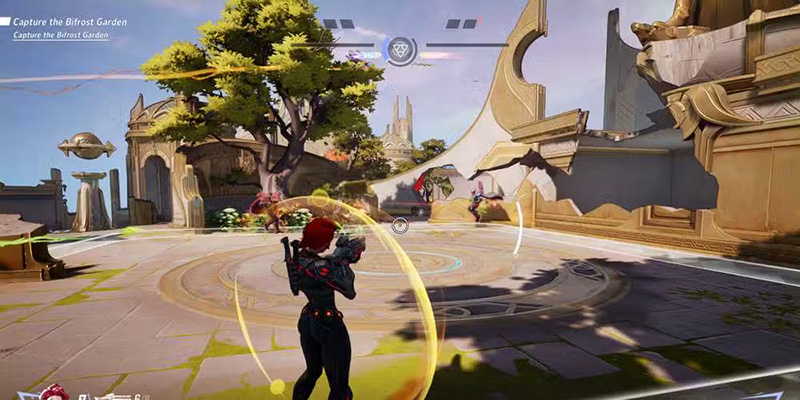
Domination is a fast-paced battle for control of a central objective. It's all about teamwork, holding ground, and outlasting the enemy in a symmetrical fight.
Basic Rules, Pal!
Both teams spawn simultaneously and at an equal distance from a single control point in the center of a mirrored map. The first team to capture the point and hold it until their control meter reaches 100% wins the round. The point becomes contested if players from both teams are on it. If the controlling team reaches 99% but enemies are still on the point, the game goes into overtime until one team secures full control. Matches are typically Best of 3 rounds, and significantly, ultimate charge carries over between rounds within the same match, allowing for strategic ult-saving.
Where You'll Be Battling: Map Pool
Prepare to fight for dominance on these maps:
- Birnin T'Challa (Intergalactic Empire of Wakanda)
- Hell's Heaven (Hydra Charteris Base)
- New in Season 2.5: Hellfire Gala: Krakoa
- Retired from Ranked Play in S2.5: Yggsgard - Royal Palace (still available in Quick Match/Custom)
| Aspect | Details |
|---|---|
| Round Objective | Capture and hold the central control point until your team's progress reaches 100% |
| Match Format | Best of 3 rounds. First team to win two rounds wins the match |
| Overtime | Triggers if the controlling team reaches 99% while enemies are on the point. Continues until the point is cleared or flipped |
| Ultimates | Ultimate ability charge does carry over between rounds in a Domination match |
Dream Teams: Meta-Defining Comps
Domination is all about sustained team fights and objective control.
- Area Control Masters: This archetype is explicitly cited as vital for Domination. Heroes like Groot (walls), Peni Parker (traps/area denial), Namor (turrets), and Loki (clones for confusion and presence) excel at fortifying the point. Iron Man can add significant area damage, while Luna Snow provides the necessary sustain for the defenders. The ability to create "no-go" zones for the enemy is invaluable.
- The "Meta" Team (Balanced Power): A composition featuring strong Vanguards like Venom and Magneto for durability and disruption, consistent ranged damage from Duelists like Scarlet Witch and Punisher, and robust support from Strategists like Luna Snow and Mantis, offers a powerful blend of offense and defense ideal for holding the point. Magneto's ability to control chokepoints and protect against projectiles is particularly strong here.
- Brawl & Sustain: Compositions that can win prolonged fights on the point are key. This means durable Vanguards (Hulk, The Thing), Duelists who can output consistent damage in a scrum (e.g., Mr. Fantastic, Winter Soldier), and Strategists who can provide massive healing throughput (Luna Snow, Invisible Woman, Rocket Raccoon). The Season 2.5 poke meta also means that teams who can effectively chip away at opponents trying to approach or contest the point will have an advantage.
Convergence: Two Phases of Fun!
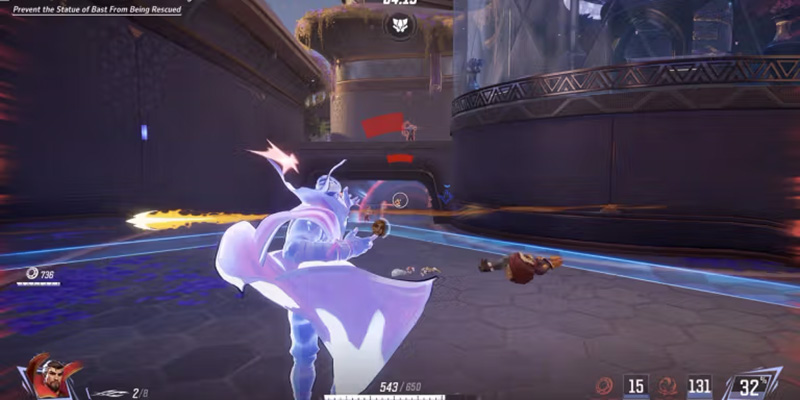
Convergence is a hybrid mode that combines elements of point capture (like a mini-Domination) with payload escort (like Convoy).
Basic Rules, Pal!
Convergence matches unfold in two distinct phases:
- Phase 1: Point Capture: One team attacks a designated point, while the other defends it. The defending team gets a 30-second head start to set up.
- Phase 2: Payload Escort: If the attackers successfully capture the point, spawns change, and a payload vehicle is activated. The attacking team must then escort this vehicle through checkpoints to the end of the map, similar to Convoy rules. The vehicle moves automatically if controlled by attackers, speeds up with more attackers nearby, and can be halted or reversed by defenders.
Where You'll Be Battling: Map Pool
Test your adaptability on these Convergence maps:
- Hall of Djalia (Intergalactic Empire of Wakanda)
- Symbiotic Surface (Klyntar) – known for its interactive environment with gray blobs that can create platforms
- Retired from Ranked Play in S2.5: Shin-Shibuya (Tokyo 2099) (still available in Quick Match/Custom)
| Aspect | Details |
|---|---|
| Phase 1 Objective | Attackers capture the initial point. Defenders prevent capture |
| Phase 2 Objective | Attackers escort the payload to the end. Defenders stop the escort |
| Checkpoints (Phase 2) | Typically one checkpoint around the halfway mark that adds time and prevents the payload from moving further back |
| Timers | Round 1 (Point Capture) often has a 5-minute timer. Subsequent rounds (Payload Escort) may have timers like 3 minutes + remaining time, then 1.5 minutes + remaining time. Specifics can vary |
| Winning | Attackers win by completing the full escort. Defenders win by preventing point capture or full escort within the time limits |
| Competitive Play | Played in two rounds, with teams switching sides. The team that pushes further/captures faster wins. Ties can go to overtime |
| Quick Play | Usually a single round |
Dream Teams: Meta-Defining Comps
Versatility is the name of the game in Convergence, as teams need to adapt between the two phases.
- Phase 1 (Attack): "Rush" comps with high mobility and burst (Thor, Captain America, Storm, Punisher) can be effective for quickly overwhelming the initial defense. Alternatively, a "Poke" heavy comp (Hawkeye, Hela, Iron Man) can try to create openings from range before committing.
- Phase 1 (Defense): "Area Control" comps shine here (Groot, Peni Parker, Loki, Namor) to make the point incredibly difficult to capture. Strong defensive Vanguards like Doctor Strange or Magneto can hold chokes.
- Phase 2 (Attack/Defense): Strategies become similar to Convoy mode. Attackers will want sustain and pushing power, while defenders will focus on stalling and area denial.
- Overall - Balanced 2-2-2: A balanced composition (e.g., Venom/Captain America, Spider-Man/Peni Parker, Rocket Raccoon/Mantis) provides the flexibility to handle both the point capture and payload escort phases effectively. Heroes who can transition well between holding ground and mobile warfare are valuable. For instance, Peni Parker can set up nests for defense in Phase 1 and then reposition them to support the payload push or defense in Phase 2.
Clash Arena: Quick Fights, Big Action!
Looking for something a bit more straightforward and action-packed? The Clash Arena modes are perfect for warming up, practicing new heroes, or just blowing off some steam! These are typically found in the Arcade queue.
Conquest: Orb Collectors Unite!
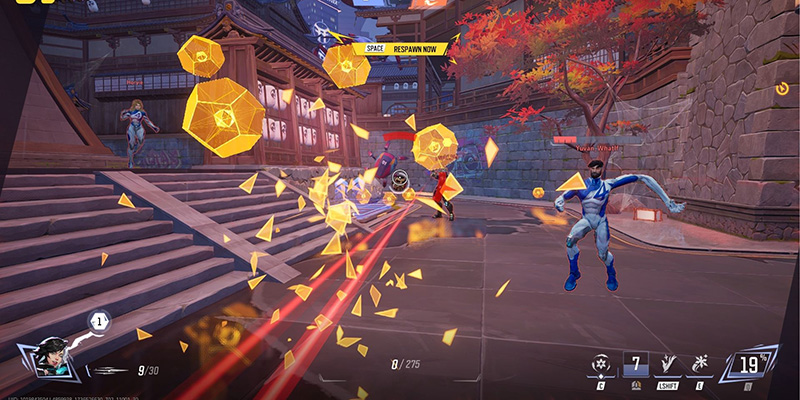
This mode is a unique take on team deathmatch where kills are just the first step.
Basic Rules, Pal!
Two teams of six battle it out. When a hero is defeated, they drop Chronovium Orbs. Players must collect these orbs to score points for their team. The first team to gather 50 orbs wins. If the timer (usually around 3 minutes and 50 seconds to 4 minutes) runs out, the team with the most orbs takes the victory. A key rule: every player on a team must pick a unique hero – no duplicates allowed!
Where You'll Be Battling: Map Pool
Currently, Conquest is primarily played on:
- Tokyo 2099: Ninomaru (Some older sources might mention Yggsgard - Royal Palace, but Ninomaru is the dedicated map noted in more recent Conquest-specific guides)
Why It Rocks
Conquest is fantastic for a few reasons:
- Pure Combat Focus: Without complex objectives, players can hone their combat skills, movement, and understanding of hero matchups.
- Hero Practice: It's a great environment to test out new heroes in live combat before taking them into Quick Play or Competitive.
- Fast & Fun: Matches are quick and action-packed, perfect for a short burst of Marvel Rivals fun.
- Team Comp Lite: While some hero synergy helps, individual dueling prowess and the ability to secure orbs are often more critical. Good picks include heroes strong in skirmishes or 1v1s like Iron Fist (high burst, mobility, self-healing), Venom (brawler), Spider-Man (agility, pick-offs), Rocket Raccoon (can play aggressively solo for a Strategist), and Magik (hit-and-run assassin). Don't forget to actually collect the Chromium orbs after a KO; they are essential for scoring!
Doom Match: Free-For-All Mayhem!
If team play isn't your vibe for a moment, Doom Match offers pure, unadulterated free-for-all chaos.
Basic Rules, Pal!
It's every hero for themselves! The primary goal is to be the first to achieve a certain number of Final Hits (eliminations), typically 16 or 18. Alternatively, the player with the most kills after a 10-minute timer wins. There are no teams; everyone is a target. At the end, the top six performers are generally considered the "winners". Deaths can act as tie-breakers, so minimizing them is also beneficial.
Where You'll Be Battling: Map Pool
The main arena for this chaotic showdown is:
- Sanctum Sanctorum – Doctor Strange's mystical abode, a maze-like map filled with corridors and portals
Why It Rocks
Doom Match serves several purposes:
- Ultimate Warm-Up: Excellent for practicing individual mechanics, aiming, and ability usage without team pressure.
- Limit Testing: A good place to push heroes to their limits and understand their 1vX potential.
- Casual Fun: Sometimes, it's just fun to blast away without worrying about objectives.
- Practice Mode Version: Players can access a special hour-long Doom Match lobby via the Practice menu, which has no win/loss pressure and is perfect for extended training sessions.
Arcade & LTM Rotation: Always Something New!
Beyond the core modes and Clash Arena, Marvel Rivals keeps things fresh with a rotating selection of Arcade modes and Limited-Time Modes (LTMs).
What's the Deal with LTMs?
LTMs are special game modes that are available for a limited period, often introducing unique rules, mechanics, or even new maps. They provide a different flavor of gameplay and are a great way to experience Marvel Rivals in new ways. Keep an eye on game announcements to see what LTM is currently active!
Current LTM: Ultron's Battle Matrix Protocol! (Season 2.5)
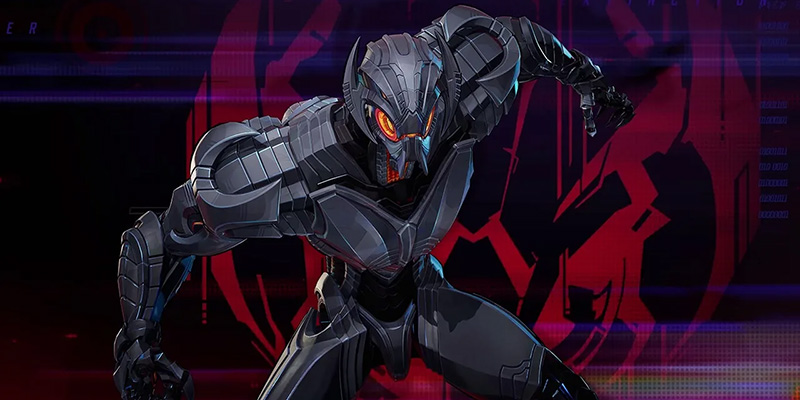
Season 2.5 brings a brand-new LTM: Ultron's Battle Matrix Protocol, which is an autochess-style game mode featuring Marvel Rivals characters.
How This Autochess Arena Works
In this mode, players select a team of six heroes who then battle automatically against other players' teams round after round. Strategy revolves around building a strong team composition, managing an in-game currency (tokens) to buy and upgrade heroes, and selecting powerful "Modules" that provide passive bonuses.
Keys to Conquering the Matrix
Success in Ultron's Battle Matrix Protocol goes deeper than just picking traditionally "strong" heroes. The autochess systems themselves are where the real strategy lies.
- Economy is King! One of the most crucial aspects is managing the token economy. Players earn interest on their saved tokens, so a common strategy is to try and reach 50 tokens as quickly as possible to maximize this passive income each round. Dropping below this threshold can significantly hamper the ability to afford crucial upgrades and rerolls later in the game compared to opponents who maintain a strong economy. This consistent extra income, potentially adding up to 125 or more credits over a full game, allows for more hero purchases, rerolls for desired heroes or modules, and leveling up the team.
- Modules Matter More! While hero choice is important, the Modules selected can often be the deciding factor in battles. Powerful, synergistic modules can allow a team of "average" heroes to defeat a team of "perfect" meta heroes that have poor or ill-fitting module choices. Prioritizing Rare (purple) and Legendary (gold) modules that fit the team's composition is generally advised, even if it means locking the shop and waiting a round to afford them without crippling the economy.
- Synergy & Roles: Players need to consider how their chosen heroes and roles synergize with each other and with the available Protocols (overarching buffs based on team composition). Common team structures include stacking six heroes of the same role (e.g., "Six Duelist Powerhouse" or "Six Vanguard Wall") to maximize role-specific Protocol bonuses, or running more balanced setups like a 2-2-2 composition (two of each role) to benefit from "Protocol Equilibrium" which rewards role diversity. Another approach involves a 3-1-2 or 2-1-3 split (e.g., 3 Strategists, 1 Vanguard, 2 Duelists), focusing on a primary damage-dealer supported by strong tanks and healers. Core heroes often mentioned for balanced builds include Luna Snow, Adam Warlock, and Venom, with flexible slots for other tanks and a carry DPS like Iron Man, Namor, or Scarlet Witch.
Keep an Eye Out for More!
Remember, LTMs rotate! So, if Ultron's autochess isn't your jam, or if you master it quickly, there will always be something new on the horizon to try out.
General Tips for S2.5 Meta Mastery!
Alright, now that the game modes are covered, let's talk about thriving in the current Season 2.5 meta!
The Skies are Busy, The Fights are Pokey!
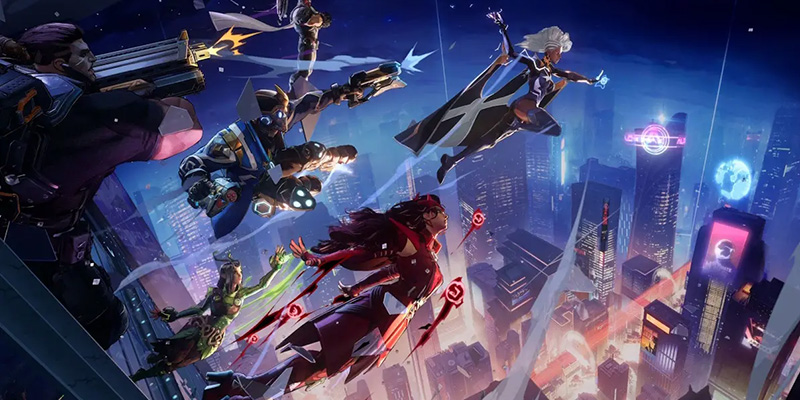
The big shift in Season 2.5 is the rise of flying characters and a meta that favors poke damage (chipping away at enemies from a distance). This means heroes who can take to the air like Iron Man, Ultron, Storm, and Human Torch are very influential. The general strategy often involves wearing down opponents with sustained ranged fire before committing to closer engagements.
This has a twofold implication: players might want to master these aerial and poke heroes, or, just as importantly, learn how to effectively counter them. Heroes like Hela, Hawkeye, and Punisher have become valuable for their ability to ground flyers and punish ranged opponents.
Team-Ups: Your Super-Powered Friendships!
Team-Up abilities, where two specific heroes unlock a powerful synergistic effect, are more impactful than ever in Season 2.5. The developers even added a "Synergy" metric to their competitive hero ranking system, highlighting how much a hero's win rate can improve when paired correctly.
Some top-tier Team-Ups to look out for in Season 2.5 include:
- Stark Protocol (Iron Man & Ultron): This new team-up is fantastic for aerial dominance, providing Iron Man with a damage boost and Ultron with a new Nano-Ray ability, enhancing their combined sustain and offensive pressure.
- Rocket Network (Peni Parker & Rocket Raccoon): This new synergy significantly boosts Peni Parker by allowing her Bionic Spider-Nest to be upgraded to Web Beacon when the Team-Up is active, likely enhancing its utility or durability, while Rocket gains a healing effect boost.
- Luna Snow & Hawkeye (New!): Luna Snow now anchors this team-up, gaining a +15% healing effect, while Hawkeye unlocks a new Ice Arrow ability, adding powerful crowd control to his already potent damage.
- Guardian Revival (Mantis + various): While not new, this team-up involving Mantis consistently performs as one of the strongest, significantly boosting her win rate by providing powerful utility or buffs.
Ban Smart in Ranked (Gold+): Know Your Enemy, Know Your Options!
In Competitive Play, the pick/ban phase (which now starts from Gold III rank instead of Diamond) is a crucial part of the strategy. Understanding who to ban can significantly impact the match.
Often, banning highly influential meta heroes – such as dominant flyers like Storm, oppressive tanks like Peni Parker (especially with Rocket), or high-impact Duelists like Hela or Hawkeye if they counter your team's intended strategy or are simply overtuned – is a solid approach.
However, there's a deeper layer to consider: the "opportunity cost" of bans. When a hero is frequently banned, it effectively reduces their presence in matches, even if they aren't picked every game they're available. This has two main consequences for players. First, if an opponent relies heavily on a commonly banned hero, removing that hero can severely disrupt their game plan, forcing them onto less comfortable or less optimal picks. Second, and just as importantly, if a player's main hero is a frequent ban target, they must have a flexible hero pool. Relying on a single hero who is often banned means that player will frequently be unable to play their preferred character, putting their team at a disadvantage. Therefore, it's highly recommended that players aiming to climb in ranked develop proficiency with at least 2-3 heroes for their preferred role(s) to adapt to bans and enemy picks.
Go Get 'Em, Hero!
Phew! That's the full debrief on all the game modes and some key meta considerations for Marvel Rivals Season 2.5! From the strategic depths of Convoy and Convergence, the focused brawls of Domination, the chaotic fun of Clash Arena, to the unique challenge of Ultron's Battle Matrix Protocol, there's a battlefield for every type of player.
Remember these tips, don't be afraid to experiment with different heroes and team compositions, and most importantly, have an absolute blast out there. The Marvel universe is your playground. Now, assemble your squad, strategize, and show your rivals what true power looks like!
See you in the fight!
